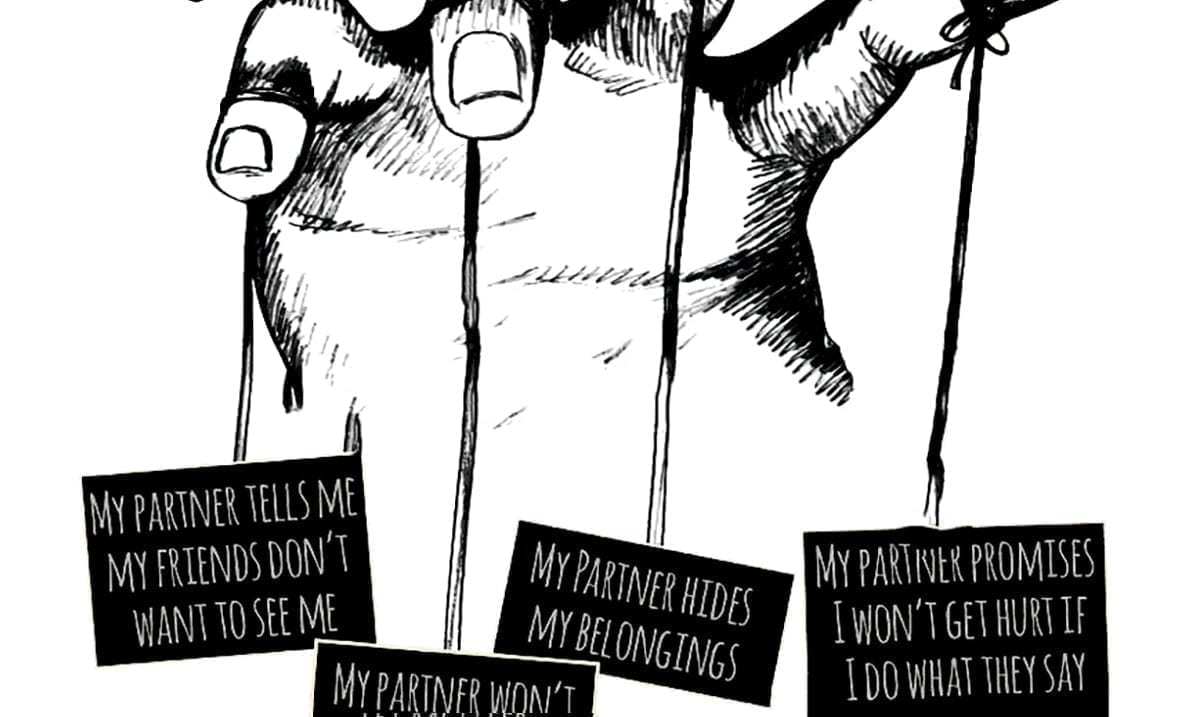
Everybody wants to live a beautiful life, which includes meeting the ideal partner—someone who is attractive, caring, and everything else you could possibly want. But gradually, gently, things start to change. They begin scrutinizing your attire; a simple comment turns into a fight, monitoring your phone conversations, and isolating you from friends and relatives. You find yourself constantly walking on eggshells, afraid of triggering their anger.
This is not a scene from a psychological thriller; rather, it is the terrifying reality of coercive control, a hallmark of domestic abuse, and, tragically, Alicia’s reality in Scars of Abuse and many others, where their lives are turned into nightmares by those who are supposed to love and cherish them. The Scars of Abuse book provides insight into the subtlety of coercive control, a covert tool used by abusers to maintain power and dominance.
Table of Contents
What is Coercive Control?

Source: daykinfamilylaw.com.au
An abuser uses a systematic and deceptive pattern of behaviors known as coercive control, or intimate relationship controlling behavior, to gain and hold onto power and authority over their partner. It’s a calculated strategy to undermine a victim’s sense of self, independence, and autonomy rather than sporadic violent outbursts. Unlike physical abuse, which frequently results in visible scars, coercive control thrives in the shadows, leaving emotional and psychological wounds that might take years to heal.
Abusers employ a variety of tactics to control and manipulate their relationships. Here are some of the tactics they use, knowing them can help you recognize the warning signs;
- One of the main components of coercive control is isolation. In order to keep you from seeing your friends and family, the abuser may progressively cut off contact with you, say hurtful things about them, or carefully manipulate circumstances. They could make you feel like they’re the only ones who really understand you, or they might guilt-trip you for going out.
- Humiliation and Degradation: The abuser may be critical of your looks, IQ, or decisions on a regular basis. They may try to undermine your self-worth by using name-calling, sarcasm, or put-downs. You may start to doubt reality and your own judgment as a result of this unrelenting negativity.
- Monitoring and Surveillance: The abuser may check your phone constantly, utilize GPS applications to track your whereabouts, or keep an eye on your social media activities. They may even ask to put spyware on your devices or demand access to your passwords. You feel as though you have no privacy because of the dread and paranoia brought on by this ongoing scrutiny.
- Threats and intimidation: To keep you in line, the abuser may use threats of violence, self-harm, or even harm to pets or loved ones. They may play on your worst fears to control you, threatening to leave you or take your kids away.
- Financial Abuse: The abuser may have control over your money, preventing you from getting loans or placing you in a dependent financial position. You can feel helpless and confined if they make you account for every dime you spend.
- The particularly devious approach known as “gaslighting” involves the abuser twisting or denying reality to cause you to doubt your own recall and sanity. They may tell you outright lies before calling you insane or forgetful. You become disoriented by this deliberate misdirection and find it more difficult to believe in your own judgment.
- Guilt and Obligation: When the abuser pretends to be the victim, you may be held accountable for their contentment or lack thereof. If you try to stand up for yourself or disagree with them, they may try to twist the situation such that you feel bad about it.
- Possessiveness and Jealousy: The abuser may show intense jealousy toward your friends, coworkers, or even relatives. They can attempt to further isolate you by limiting who you interact with and see.
The Deceptive Dance: How Coercive Control Plays Out in “Scars of Abuse” (Spoiler Alert!)

Source: bodyandsoul.com.au
In the Scars of Abuse book, Paul manipulates Alicia using a terrifying range of coercive control techniques. Here are few instances:
- Isolation: He arranges events that exclude her friends or makes subtly disparaging remarks about them, which deters Alicia from seeing them. He gently erodes her bonds with her family, causing friction and alienation.
- Abuse of Finances: He seizes command of their money, giving Alicia little to no access to it. He may be in charge of their bank accounts, require her to account for all of their purchases, or even have her give him her salary.
- Monitoring and Surveillance: He keeps a close eye on her social media activities, checks her phone frequently, and even uses GPS programs to track her whereabouts. She feels as though she has no privacy because of the dread and paranoia brought on by this continual observation.
- Humiliation and Degradation: He berates her beauty, intellect, and decisions on a regular basis. He might undermine her confidence with name-calling, putdowns, and sarcasm. She begins to doubt her own abilities and feels unworthy due to the constant negativity.
How can one break free from coercive control?

Source: mirror.co.uk
It can be quite difficult to break free from coercive control. The abuser uses many strategies to make the victim feel alone, undermine their self-worth, and instill dread. But keep in mind that you’re not by yourself. Help is accessible, and there is hope.
The following actions can help you escape the clutches of coercive control:
- Learn for Yourself: The more knowledge you have about coercive control, the simpler it will be to spot the warning signals and create an escape strategy. Books on the subject and internet support groups are two excellent resources.
- Whenever something feels off, it probably is. Trust your instincts. Never discount your instincts. Persuasive control frequently relies on challenging your perception of reality. Keep an eye out for warning signs and covert instances of your partner’s manipulative or domineering behavior.
- Record the Abuse: If you’re thinking about leaving, document the mistreatment. Screenshots of offensive texts, audio recordings of disputes, or a list of instances in which you were intimidated or denigrated could all be examples of this. If you need to file for a formal separation or obtain a restraining order, this paperwork may be useful.
- Build Your Support System: Make new connections with any relatives and friends you may have been cut off from. Their affection and encouragement will be invaluable to your rehabilitation process.
- Create a Safety Strategy: Make an exit strategy, particularly if you are afraid of violence. This could entail having a place to go that is safe, a bag filled with necessities, and dependable family members or friends who can assist you in leaving.
- Seek Expert Assistance: A therapist with expertise in domestic abuse can offer priceless assistance and direction. They can support you in regaining your self-esteem, learning coping skills, and processing the abuse.

Source: evolvefamilylaw.co.uk
Scars of Abuse is a tribute to the resiliency of the human spirit as well as a tale of the atrocities of domestic abuse. Survivors can regain their life and reconstruct their sense of self by identifying the warning signals of coercive control and getting assistance. Remember that it takes time to recover from coercive control. Celebrate your little accomplishments and have patience with yourself. On the other side is a life of happiness and freedom waiting for you.







